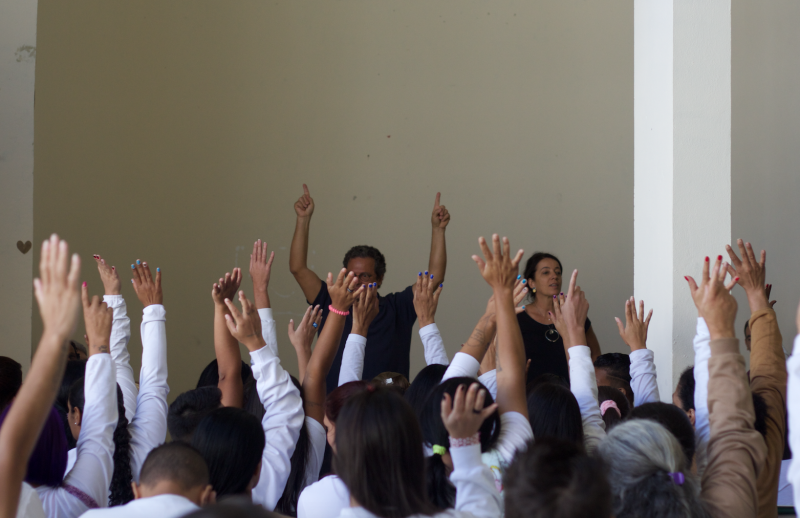A workshop given by designer Renato Imbroisi to 50 inmates of the II Female Penitentiary of Tremembé, in the state of São Paulo, launched a Humanitas360 project to create the second inmates co-op in Brazil. Inspired by the pioneering initiative of the Women’s Recovery Center (CRF) in Ananindeua, located in the outskirts of Belém, in the state of Pará, the initiative is part of a partnership between H360, the Department of Penitentiary Administration (SAP/SP) and the State Department of Criminal Enforcement (Deecrim/SP).
The project was developed with the support of the Council for the Community of Taubaté (CCVEC), a group made up of volunteers living in the region, which ensures law enforcement on the daily basis of criminal execution. “Our job consists in establishing a human connection with the inmates,” says Maria Teresa Ivo, president of the Council.
Designer Renato Imbroisi has a long history of contribution to social services, particularly with handicrafts communities in Brazil and in African countries, and is often accompanied by also designer Cristiana Pereira Barretto. They aim to develop manual talents – from embroidery and crocheting to sewing and painting – with inmates selected for the program. Imbroisi says that as well as developing new skills, his main goal is for inmates to “develop trust, relationships and willingness to listen to others”.
According to a research conducted by the coordinators of the first Brazilian co-op in Ananindeua, in Pará, none of the 209 women that took part part in the Women’s Art Co-op (COOSTAFE) went back to criminal activities. According to Carmen Botelho, director of the Female Penitentiary in Pará, the numbers prove that the success to reintegration is directly connected with the opportunities prisoners are given while incarcerated.
“The very same society that demands a successful reintegration of prisoners, refuses to offer any kind of opportunity to inmates that are truly capable of changing,” says Ms Botelho. Therefore, as well as keeping inmates busy, the co-ops give them a purpose, a source of income and make it less likely for them to return to criminal life. Just like in Belém do Pará, the inmates in São Paulo will also be provided with support to manage money from sales and will be granted permission to send money to family members. “Here in prison, we turn inmates into entrepreneurs,” says Ms Botelho.
As well as perfecting the model introduced in Pará, the H360 model being introduced in São Paulo counts with three new factors. Firstly, the support of the Community Council, which helps with the relationship between prison employees and the inmates themselves, as well as ensuring law enforcement, which is indispensable for the project’s success. Secondly, a more refined design for the handicrafts, and, finally, the creation of a brand with strong marketing strategy. These key points will make it easier to market and sell products crafted by inmates to a layer of society with high purchasing power – aiming a higher profit margin for the co-op.
Tremembé’s co-op is only the second project of its kind being launched in Brazil, but it has shown its effectiveness from the very first workshop, attended by the Council, designers, inmates and the H360 team. According to one of the inmates, Juliana, 32, the initiative shows that “society hasn’t forgotten us. It is a chance to start over.” Motivated by the same principle, Imbroisi resumed the first event by saying: “Everybody knows the good and the bad things that they did. Here, we will start something good, something new.”





